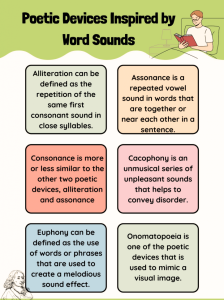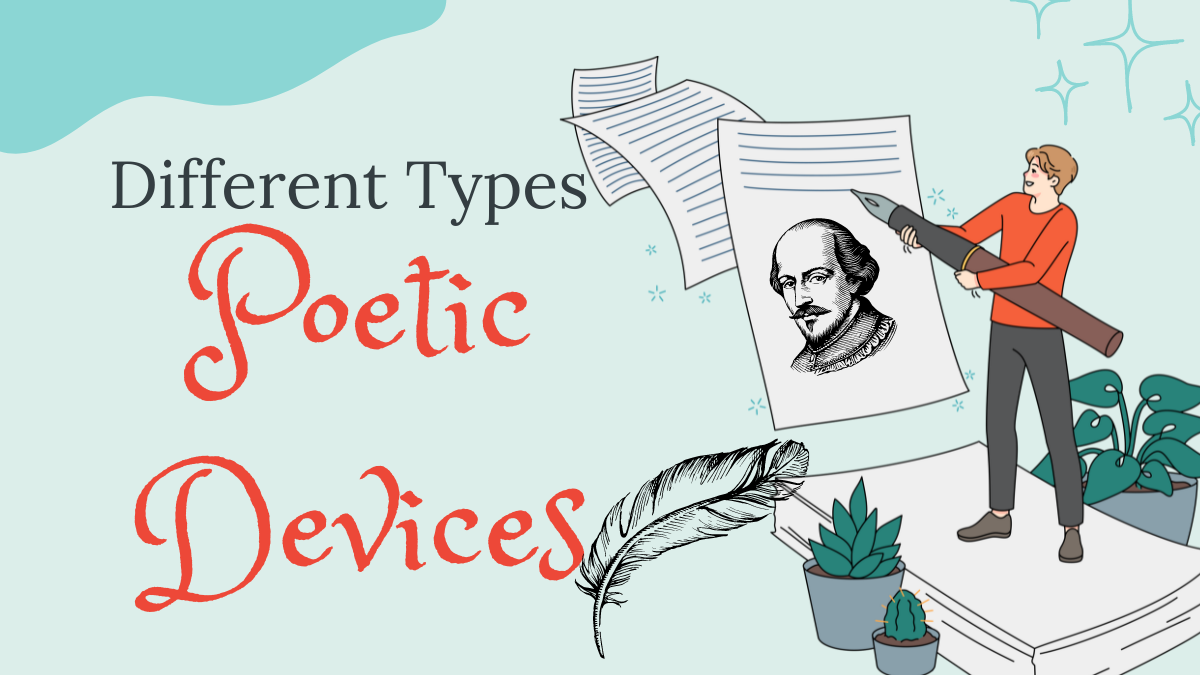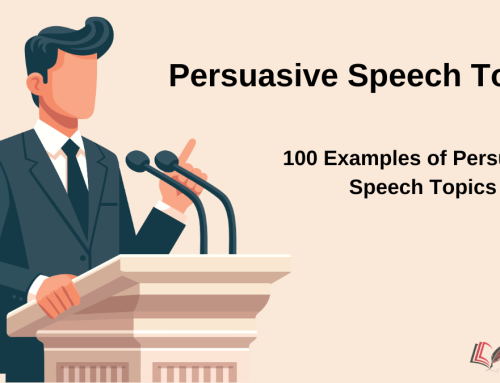Different Types of Poetic Devices with Examples
We all are fond of listen and read poems. They are like our companions, always there for us at home and school, bringing as joy. Absolutely, each and every poem has its own unique style and tone, but have you noticed that all poems are different from each other in style and manner in which they were written? Did you ever how poems follow different patterns? Those pattern are called poetic devices. the various types of sound, rhythms, shape, words and phrases which are used in poems are mention to as poetic devices. Each poet has unique style to use these terms, aiming to pulling the reader into the imaginary world. These are essential tools for shaping and give meaning to any of the poems.
With this blog post from Best Assignment, lets notice more about these devices and how various poet use them in their own works. By the end of this blog post, we hope your perspective on poem is changed and you will see them in new light and gain helpful insights for your studies.
What Are Poetic Devices?
Poems are very different from other form of writing. A poet has limited material to craft his masterpiece. There is a restriction on him of using words which he wants and can use only those words which convey their ideas and feelings. Poetry often needs advanced words. If you use words well, you can make something amazing too. Words should create impactful sounds for their listener and bringing joy to theirs ears. But remember, they should also make sense and encourage deep human thoughts, empathy, and feelings. Words in poems should appear simple, self-contained, and natural.
You may struggle to understand your courses if you’re studying literature. Completing a poetry homework assignment might not be difficult, but receiving a decent grade can be challenging. Assignments you complete on time may not be of high quality. Why? It can be that you’re not versed in the nuances of poetry. You need to study poetic devices in order to correct this. This blog can aid in your comprehension of poetry.
Types of Poetic Devices
Poetic devices are tools that poets use to add meaning and enhance beauty of the poems. Sometimes, English literature student faces some issues about these different types. They think to understand them better they take help with their online classes of English. But they are not enough for solve everything. there is main thing that you know the difference between poetic devices and other things, if you want to work with literature.

The poetic devices are divided into three types. They are:
- Poetic devices of sound
- Poetic devices of meaning
- Poetic devices of rhythm
These types are different from each other, and furthermore these are divided into their subdivisions. We talk about all of them in this blog post and understanding of how they work.
1- Poetic Devices Inspired by Word Sounds
The sound of words leaves magical effect in the reader’s mind. When words are grouped closely, they create a specific effect to the reader’s ear. These sounds can hit readers in various ways. They have various emotions like anger, happiness, love, hate, or dislike. Let’s have a look at what the literary devices inspired by this sound poetry look like.

For instance
- Fast and furious,
- Peter Piper picked a peck of pickled peppers.
- Andrew patted the pony.
- Kim’s kid kept kicking like crazy.
Assonance
Assonance is referred as repeated vowel sound in words that are together or near each other in a sentence. You will find assonance in sounds that are accented or stressed in a line.
For instance
- That solitude, which suits abstruse musings
- on a proud round cloud in white high night
Consonance
Consonance is comparable to alliteration and assonance, the other two literary methods, only in this case, consonants are repeated and close to one another. The syllables that appear at the end of this sentence are referred to as consonants. It may occasionally appear in the midst of words but never at the start.
For instance
- Boats into the past
- Cool Soul
- He had a streak of bad luck.
- When Billie looked at the trailer, she smiled and laughed.
- Tyger Tyger, burning bright.
Cacophony
It’s an unmusical sequence of disagreeable noises that contributes to the chaos. For a clearer comprehension, view the examples below.
- “I detest war because the cause of war is always trivial.”
- “Where spouting pillars spoor the evening sky,”
- “Of dynamos, where hearing’s leash is strummed…”
Euphony
Euphony comes from the Greek word “euphonos,” which means sweet-sounding. It’s the opposite of harsh, unpleasant sounds (cacophony). Writers use euphony by repeating vowels and using smooth consonants to create a pleasing effect. They often combine it with other techniques like rhyme and alliteration to make their writing sound soothing and pleasant.
Examples
- Season of mists and mellow fruitfulness,
Close bosom friend of the maturing sun; - Successes the By those who don’t succeed.
- Courage!’ he said, and he pointed towards the
‘This mounting wave will roll us shoreward soon.
Onomatopoeia
Onomatopoeia is when words sound like what they describe. It helps poets express their feelings and paint pictures with words.
The Pied Piper of Hamelin is a good example of this poetic device
“There was a rustling that seemed like a bustling
Of merry crowds jostling at pitching and hustling,
Small feet were pattering, wooden shoes clattering
Little hands clapping and little tongues chattering, And, like fowls in a farm-yard when barley is scattering…”
Now, after discussing poetic devices based on sounds, the next one is poetic devices based on the meaning of the words. Let’s understand them in detail to learn more about them
2- Poetic Devices Based on Word Meanings
Do you know about special tools poets use to make their ideas clear? These tools help them talk about things without being too direct. Here are some examples.
Allegory
Allegory is a poetic device in which abstract ideas are portrayed through characters, events, and figures. A writer can employ this in prose and poetry to tell a story to the audience. This helps in explaining the idea on which the poem is based. Often, the objective is to teach a moral lesson.
Example:
The Pilgrim’s Progress by John Bunyan and The Faerie Queen by Edmund Spenser are two major allegorical works in English.
Allusion
An allusion is an indirect reference to a place, a person, or an idea of political, historical, or cultural significance. It is usually a brief reference that does not describe the person or thing in a detailed manner. It is more like a passing comment. The writer, while using allusion, expects a reader to understand it with the knowledge he or she has.
Examples:
- Don’t act like a Romeo in front of her.” Here in this sentence, Romeo refers to Shakespeare’s work. Romeo signifies a passionate lover.
- This place is like a Garden of Eden.” The Garden of Eden is an allusion to the Garden of God in Genesis.
Irony
This poetic device depicts a contradictory situation. It refers to a situation that ends up in a different way than expected. Irony describes the difference between reality and appearance.
Example
Water, water, everywhere,
And all the boards did shrink.
Water, water, everywhere,
Nor any drop to drink.
Irony brings added meaning to a situation or a poem. It helps in developing the reader’s interest. Irony makes the poem more intriguing. It also compels a reader to use imagination to seek the hidden meaning in lines.
Metaphor
It is a comparison between two unlike things. It shows the resemblance between two completely different things. Here, the comparison is direct and not hidden. Unlike a simile, here we do not use words such as ‘Like’ for the comparison.
Examples
- “She’s all states and all princes,”
- Before high-piled books, in character
Hold like rich garners the full-ripened grain.” - Busy old fool, unruly sun,
Why dost thou thus?
Through windows and through curtains, call on us.”
Oxymoron
In an oxymoron, two contradictory ideas are put together side by side or in a sentence to create a good effect.
Example
Why, then, O brawling love? O loving hate! Oh anything, of nothing, first create!
O heavy lightness! Serious vanity!
Misshapen chaos of well-seeming forms!
Feather of lead, bright smoke, cold fire, sick health!
Still-waking sleep—that is not what it is!
This love feels like I feel no love in this.
Dost thou not laugh?
Here in the above lines, we can see how contradictory words are put together, like loving hate, bright smoke, cold fire, sick health, and waking sleep. We can easily find many oxymoronic words in these lines.
Personification
It is a poetic device in which an animal, idea, or thing is given human characteristics. The non-human object is depicted as a human. We provide human quality to non-human things.
Examples
- “When well-appareled, April on the heel
Of limping winter treads.” - “Loveliest of trees, the cherry now
Is hung with blooms along the bough,
And stands about the woodland ride.
Wearing white for Eastertide.” - “Have you got a brook in your little heart?
Where bashful flowers blow,
And blushing birds go down to drink.
And shadows tremble so?”
Simile
A simile is a way of making a comparison. It shows the similarity between two opposite things. The simile uses words such as like or as to draw a comparison.
Examples
- “O my Luve’s like a red, red rose.
That’s newly sprung in June;
My Luve likes the melody
That’s sweetly played in tune.” - “Will there really be a morning?
Is there such a thing as a day?
Could I see it from the mountains?
If I were as tall as they are,?
Has it felt like water lilies?
Has it feathers like a bird?
Is it brought from famous countries?”
Paradox
It is a poetic device that uses contradictory or seemingly absurd statements to tell a larger truth. This device’s main purpose in poetry is to provoke the readers with their ideas and themes.
Examples:
- “I am both happy and sad at the same time, and I’m still trying to figure out how that could be.”
- “In the twilight of dawn, the stars sparkled in the sky.”
- “In the vast emptiness of the universe, we search for meaning in our fleeting existence.”
- “Love is an irresistible desire to be irresistibly desired.”
Symbolism
Using different kinds of symbols while writing poems is known as symbolism. Places, objects, and actions—anything can be a symbol, which will add depth to the literal meaning of the poem.
- “O my Love is like a red, red rose
- That’s newly sprung in June;
- my Luve is like the melody
- That’s sweetly played in tune.
- So fair art thou, my bonnie lass,
- So deep in luve am I;
- And I will luve thee still, my dear,
- Till a’ the seas gang dry.”
Pun
Pun refers to a joke or humorous play of words where the poet uses words with similar spellings but different meanings, or words with different spellings but almost similar meanings. It is also a device based on the interplay of homophones.
Rhetorical Question
The rhetorical question A poetic device is one in which a question is asked not to get an answer for it but rather to explain what you feel or to create a personalized effect on something. Have a look at the following example written by Shakespeare’s. The Merchant of Venice and Lewis Carroll’s Alice’s Adventures in Wonderland to understand this term better.
Example:
- If you prick us, do we not bleed? If you tickle us, do we not laugh? If you poison us, do we not die?
- “What’s Montague? It is neither hand nor foot, nor arm, nor face, nor any other part belonging to a man. O be some other name. What’s in a name?”
- “You mean you can’t take less,” said the Hatter: “It’s very easy to take more than nothing.”
- “Nobody asked your opinion,” said Alice.
- “Who’s making personal remarks now?” the Hatter asked triumphantly.
3- Poetic Devices Based on Rhythm
Poems have a unique manner of arranging their words such that each section has a rhythm. This facilitates thought and emotion expression.
Rhyme
Rhyme is when words at the end of lines in poems sound alike. It makes poems musical and enjoyable. Kids like poems because of rhyme—they’re easy to remember and fun to say.
Examples
Humpty Dumpty sat on a wall,
Humpty Dumpty had a great fall.
Baa baa, black sheep, have you any wool?
Yes, sir, yes, sir, three bags full!
Mary had a little lamb its fleece was white as snow.
And everywhere that Mary went, the lamb was sure to go.
Repetition
Repetition means using the same words or phrases over and over to make readers feel what you’re saying more strongly.
Example:
In the bleak midwinter, frosty wind made moan,
Earth stood hard as iron, water like a stone;
Snow had fallen, snow on snow, snow on snow,
In the bleak midwinter, long ago.
Caesura
It is a break or pause in the verse to allow one phrase to finish and another to begin, which helps in the natural flow of the sentence. The poet using the caesura device in their poetry helps to create a dramatic effect on readers.
It is for you we speak, || not for ourselves;
You are abused || and by some putter-on
That will be dammed fort’s; || would I knew the villain,
Poetic Devices: Poetic Form
Poetic forms give poets different ways to write poems. In these forms, poets arrange words in specific ways. This arrangement adds meaning and beauty to the poem. These arrangements can seem random or even mechanical.
There are various types of verse, but they mostly fall into three main categories:
1- Fixed Verse
Fixed-verse poetry has rules and limits, and it sticks to a traditional pattern in each stanza. Here are some types:
- Ballad
- Haiku
- Limerick
- Lyric
- Ode
- Rondeau
- Villanelle
- Sonnet
2- Free Verse
In free verse poetry, there’s no regular rhythm or rhyme. It’s like a blank canvas—poets use it to express their thoughts freely, without any set rules.
Example
After the ship—after the whistling winds;
After the white-grey sails, taut to their spars and ropes,
Below, a myriad, myriad waves, hastening, lifting up their necks,
Tending in ceaseless flow towards the track of the ship:
Waves of the ocean, bubbling and gurgling, blithely prying,
Waves, undulating waves—liquid, uneven, emulous waves,
Towards that whirling current, laughing and buoyant, with curves, where the great vessel, sailing and tacking, displaced the surface
3- Blank Verse
In blank verse, there’s no rhyme, but there’s a steady beat called iambic pentameter. Poets use this rhythm for big moments, leaving a strong impression on the audience.
Example
“Sweet pet by day, hunter by night. She sleeps,
She eats; she plays. My feet are caught in white paws.
She’s up the fence, watching her prey—a bird.
Poor thing, better run quick, ’cause watch, she’ll pounce!
‘Cause one minute she’ll purr and smile, then snap!
She’ll spit and hiss—and, oh, surprise! A mouse.
He’s dead. A gift. Retracts her claws. Miaow!
A figure of eight between my legs looks up.
at me and purrs. The sound pulls at my heartstrings.
Rhyme Scheme in Poetic Devices
Rhyme scheme is like a pattern of rhymes at the end of each line in a poem. It’s how poets make their words sound rhythmic and rhyming. There are different kinds of rhyme schemes.
- Alternate rhyme:
- Ballade
- Monorhyme:
- Couplet
- Triplet
- Enclosed rhyme
- Terza Rima rhyme scheme
- Keats Odes rhyme scheme
- Limerick
- Villanelle
Examples
- The people along the sand
Everyone turns and looks in the same direction.
They turn their backs on the land.
They look at the sea all day.
As long as it takes to pass
A ship keeps raising its hull;
The wetter ground like glass
Reflects a standing gull.
The rhyme scheme it follows is ABABCCDD.
- As I drew nearer to the end of all desire,
I brought my longing’s ardor to a final height. ,
Just as I ought. My vision, becoming pure,
Entered more and more into the beam of that highlight.
That shines on its own truth. From then, my seeing
Became too large for speech, which fails at a sight…
Conclusion
To sum up, we’ve covered a lot in this blog post. We started by talking about what poetic devices are and why they’re important in literature. Then, we looked at the three main types: sound, meaning, and rhythm. We gave examples to help you understand each type better. After that, we talked about three specific kinds of verses used in poetry. Finally, we ended by discussing rhyme schemes in poems.
We know this might be a lot to take in, so if you’re having trouble with poetry assignments, don’t hesitate to get English homework help. Experts can help you create Best assignments and get top grades.
Frequently Asked Questions
Question 1: What is a verse in poetic devices?
Answer 1: Verse refers to a single line of poetry. It can also mean a stanza or a specific part of a poem. There are three main types of verses: free verse, blank verse, and fixed verse.
Question 2: Is there a certain number of poetic devices?
Answer 2: Poets have access to a wide range of poetic devices to enrich their writing, but it’s true that they tend to rely on a smaller set of them consistently, while others may be used less frequently or even fall out of favor for extended periods.
Question 3: Which punctuation is used in poetic devices?
Answer 3: Apostrophe, comma, exclamation mark, and question mark are the four types of punctuation that are used as tools of expression or artistic choice





Leave A Comment